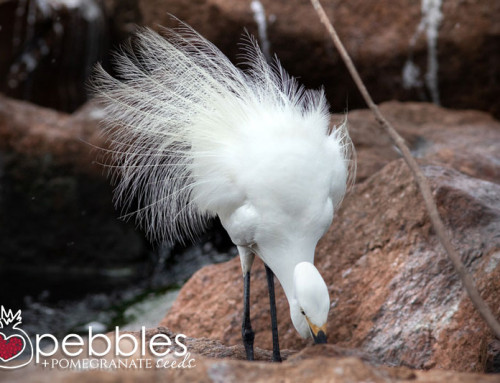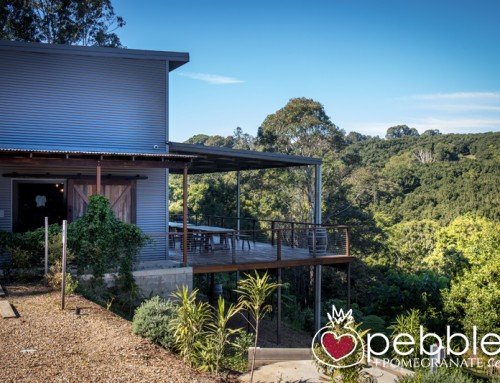Tasmania is a treasure trove of so many wonderful things, especially in the way of producers. Innovation is key and Tasmanians take pride in innovation often looking to climates of countries similar to their own for crops that have similar synergies, resulting in some fabulous experimental crops. One such crop, being pioneered by Shima Wasabi, is in fact wasabi.
Wasabi, it has brought many a tear to my eye – but all good tears. I am self-confessed wasabi fiend… there is ALWAYS a tube in the fridge, it goes on everything – sashimi, fish, in my aioli, and even steak – who needs tomato sauce when there is wasabi paste. But little did I know *shock horror* it is not the real thing! Tragedy strikes!
What most of us know and love as wasabi is actually an imposter, horseradish, the poor cousin, trying to its best to infiltrate the exotic condiment space. It is not until you try the real thing that you realise that it doesn’t cut the mustard, so to speak…

Wasabi, does indeed come from the same family, Brassicaceae, as mustard and horseradish, and (who would have thought), cabbage. But it has a superior, and more delicate flavour, and the treacherous trait of clearing the nasal cavity and bringing the aforementioned tears to one’s eyes. I am sure we have all experienced it once or twice, or in my case on a frequent basis. I have fond memories of my mother scooping up a blob of wasabi thinking it was avocado, and the frenetic hand waving, weeping and wild gasping for air that ensued…
Common wasabi that we find in supermarkets (in the tube and powder) are a combination of horseradish and mustard, as well as some fine green food colouring. It is a shame really, as it has cheapened what is a fabulous ingredient that is now very rarely used in its true form.
Having said this, the reason why this has come about is due to the fact that wasabi is quite rare in comparison owing to it having a reputation (which is true) as being particularly hard to grow – especially outside of Japan, which is its native hood. Many have tried, and failed. This is one temperamental little plant!
Another myth I should perhaps dispel is that true wasabi actually comes from the stem of the wasabi plant, not the root. This probably stems (pardon the pun) from its poor cousin imposter, horseradish, which is actually a root.

So enter, Shima Wasabi and its founders, Stephen and Karen Welsh.
Like any story of great innovation, it usually involves someone with great passion for their industry – and that someone would be Stephen. As mentioned previously, wasabi is not easy to grow. Add to that its origins – Japan – and the ‘not easy to grow’ becomes even more difficult in that the Japanese are very protective of the skills and techniques that incite wasabi to flourish.
In Japan wasabi is generally grown naturally and easily in fresh, pristine running water. The climate suits it perfectly, and there has been hundreds of years in perfecting the art of its cultivation. Wasabi in Australia is a first. Reproduction from offshoots and seeds are not terribly successful, varieties are hard to come by and not generously shared, nor is the knowledge.

All this aside, Stephen persevered, which leads me to conclude, that like most innovative producers I have met, there is perhaps a degree of madness that drives the challenge to overcome all of the obstacles.
Stephen was very generous in his time, welcoming us on a recent visit to Tasmania. His wasabi crop is grown in Northdown, a beautiful, beautiful region in northern Tasmania. It is a massive facility with row upon row of lush wasabi plants getting ready to do their thing.
Stephen planted the first trials 7 years ago emulating the pristine running water with a hydroponic system, the switchboard of which looks pretty damn sexy, monitoring every movement, change and climatic condition that is intrinsic to making this plant grow.

What helps enormously is Stephen’s background in agricultural science. Initially he was just toying around with wasabi, until the madness took over and he went fulltime in 2011. The initial plant was set up in Perth (Tasmania) and later relocated to where it is now.
Wasabi plants take two years to reach maturation, so it is a long wait and the growth slows down from mid-spring through to autumn because it is not a great fan of the warmth.

I was delighted to receive my first REAL wasabi stems in the post this week. They are odd little morsels. The leaves and flowers are also edible, and Stephen included a few of those for me to play with as well.
The first thing you need to know when using fresh wasabi, is that you need a special grater – I have a sharkskin one that I picked up in my travels in the hope of one day being in the charge of some REAL wasabi. The secret is that rather then grating this delicate stem in the way a conventional grater would grate it, the surface of the shark skin – which is quite rough – almost grinds it, rather than grates it, and the friction of this action releases the flavours. I did make a mistake though… I started from the wrong end.

I started using the pointy end, but in actual fact, you should start from the top, where there is still some greenery from the stem. As you grind downwards, the green blends with the flesh from the stem and gives it the beautiful light green hue that it is known for and a subtler, sweeter taste. However, there are a number of varieties of wasabi and some of the more vibrant green stems are guarded closely by their Japanese guardians, so we have yet to see the more vivid green varieties grown commercially in Australia.
Incredible also, is when you grate the wasabi, how quickly the sweet pungent aroma travels, and viola, tears in next to no time – powerful! Funnily, they are different tears than the tears you get from onions… they are fresher *she says fondly*, as odd as that may sound!
While wasabi is generally and most commonly used as a condiment, there is plenty of inspiration in the way of recipes. Apart from the obvious, as a condiment with sashimi and sushi, it is often used in aioli, sauces and deliciously, in ice cream. I even came across a macaron recipe – yum. There are also a few Tasmanian products using wasabi as a flavouring; cheese, mustard, sausages and some fabulous Wasabi Cherries preserved by Tasman’s Harvest which I picked up at the Salamanca Markets while in Hobart and have proven to be a sensational addition to my martini’s (using Tasmania’s Poltergeist Gin of course!).
However, my wasabi was earmarked for some curing and I paired it with a few combinations to cure some incredibly fresh Kingfish, for some amazing results.
Wasabi and Poltergeist Gin Cured Kingfish
Wasabi and Sake Cured Kingfish
Wasabi, Lemongrass and Sake Cured Kingfish

Using fresh wasabi is of course the ultimate, but Shima Wasabi have all bases covered and freeze dry their wasabi to produce an authentic wasabi powder which makes it a little more accessible for every day use. Should you wish to have a play, and experience the real thing, you can purchase fresh wasabi stems, when in season and the powder throughout the year. See Shima Wasabi website for more details.
One thing that is a given… once you experience the real thing, it will make it hard to ever go back, which makes me thankful that there are people like Stephen pushing the boundaries and giving Australian chefs the opportunity to work with premium fresh produce that would be otherwise inaccessible. What a wonderful world we live in.
Note: Since visiting Shima Wasabi has moved on to its next stage in the wasabi journey with its recent sale to TasFoods. Stephen continues to enjoy the journey as general manager and there are lots of plans, so I can’t wait to see what happens next…
For more information and order visit:
This story was written by Petra Frieser – Pebbles + Pomegranate Seeds




















